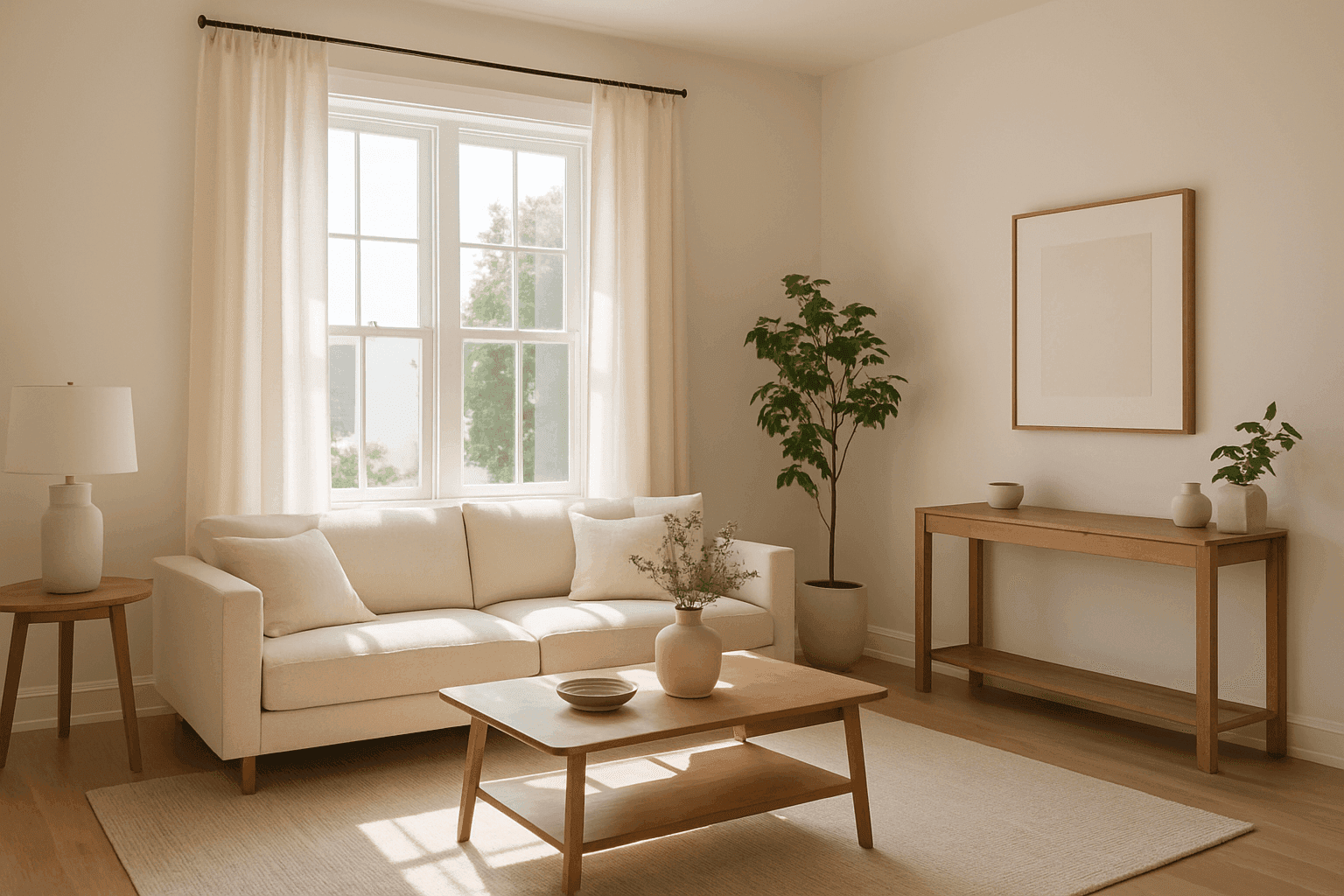VALANCES ARE OUT! THE CHIC NEW TREND THAT'S TAKING OVER HOMES
For years, window valances were the finishing touch every designer swore by—a soft drape, a polished look, a “must-have” for cozy charm. But step into any modern home in 2025, and you’ll notice something striking: valances are quietly disappearing. Designers are ditching the fabric toppers in favor of something sleeker, airier, and undeniably more contemporary. The change is subtle but powerful—and it’s reshaping the way homes feel from the inside out.

What’s replacing the traditional topper is more than just a stylistic shift—it’s a reflection of how we want our homes to feel. The new mood is calm, intentional, and refreshingly unlayered. From minimalist lofts to cozy suburban homes, the era of heavy fabrics is making way for a lighter, airier kind of beauty.
✨ Why the World Fell Out of Love with Valances
To understand why valances are fading away, we need to look at the evolution of home design itself. Valances first gained popularity in the mid-20th century, when layered draperies symbolized comfort, privacy, and prosperity. They offered visual softness and a sense of “completeness.”
But design language changes. Over time, those same details began to feel excessive. In the 2010s, the minimalist wave hit hard—clean lines, open layouts, and muted palettes replaced ornamentation. Suddenly, heavy valances and ruffled swags began to clash with the very essence of modern living: lightness, clarity, and flow.
Today’s homeowners crave openness. The once-charming valance now feels like a visual barrier—a relic from a busier, more decorative era. The message is clear: less fabric, more freedom.
🌅 The Aesthetic of Airiness
Minimalist window design isn’t about cold simplicity—it’s about breathing space. When you remove a valance, you immediately notice more light, more structure, and more sky. The window frame itself becomes an architectural feature, not something to hide behind folds of fabric.
Designers are rethinking how windows can shape an interior’s energy. Natural light now acts as a design tool, softening textures and expanding visual boundaries. Neutral tones—warm whites, greiges, and natural wood—reflect sunlight, amplifying the sense of serenity.
Instead of layered fabrics, you’ll see linen panels that move gently with a breeze, woven shades that bring subtle texture, or motorized blinds that disappear with a click, leaving nothing but light. The new luxury isn’t in lavish treatment—it’s in the quiet control of simplicity.
🪞The Psychology Behind the Shift
Beyond aesthetics, this change speaks to something deeper. The shift away from valances mirrors the broader lifestyle transformation happening in homes everywhere. People are decluttering, downsizing, and designing with mindfulness.
Heavy window coverings once symbolized privacy and insulation from the world. But after years of over-decorating and overstimulation, the modern homeowner seeks transparency—literally and figuratively. Sunlight streaming through bare windows feels like a daily reset, a visual reminder of calm and clarity.
This trend ties directly to the emotional impact of our surroundings. Studies in interior psychology show that natural light reduces stress and boosts mood, while visual openness promotes a sense of freedom. By removing excess décor, we create an environment that mirrors mental space—a home that supports rather than overwhelms.
🪟 What’s Replacing Valances (and Why It Works)
Gone are the days of ornate swags and fabric cornices. In their place, designers are embracing solutions that are clean, functional, and timeless:
Sheer Linen Curtains – Soft, breathable, and elegant without feeling heavy.
Woven Wood Shades – Bring natural texture and earthy warmth to minimalist interiors.
Tailored Roman Blinds – Offer privacy and control without cluttering visual lines.
Architectural Top Frames – Use wood or painted trim for a polished finish—no fabric required.
Motorized Roller Shades – Blend technology with design, disappearing when not in use.
These alternatives align with the broader eco-conscious design movement—using sustainable materials, maximizing natural light, and reducing unnecessary consumption. A clean window is no longer seen as “bare,” but as beautifully intentional.
🪶 The Silent Influence of Scandinavian and Japandi Design
If you’ve scrolled through design inspiration lately, you’ve likely noticed an explosion of Scandinavian and Japandi-style interiors. Both design philosophies celebrate restraint, craftsmanship, and natural light—values that directly conflict with the traditional valance aesthetic.
In Scandinavian design, simplicity and comfort coexist. Curtains hang lightly, sometimes not at all, allowing daylight to pour in during short Nordic days. In Japandi (a fusion of Japanese and Scandinavian sensibilities), windows are treated as serene frames for nature, not decorative features in themselves.
The result? Spaces that feel balanced, intentional, and deeply calming. It’s no surprise this influence has crossed oceans and entered everyday homes worldwide.
🏡 A Practical Guide: Updating Without Overhauling
The good news—modernizing your windows doesn’t mean starting from scratch. Here’s how to bring this chic, light-filled trend into your space:
Start with subtraction. Simply remove your valance and live with the change for a week. You’ll likely be amazed at how much brighter and larger the room feels.
Simplify your palette. Choose neutral or earthy tones for curtains or blinds that complement your wall color rather than compete with it.
Play with texture, not pattern. Replace printed fabrics with tactile materials—linen, bamboo, or organic cotton.
Highlight natural light. Keep furniture low and away from windows. Light loves room to travel.
Embrace imperfection. A slightly wrinkled linen panel feels real, lived-in, and authentic—qualities that define today’s cozy minimalism.
Even these small adjustments can instantly modernize your home while keeping it warm and welcoming.


